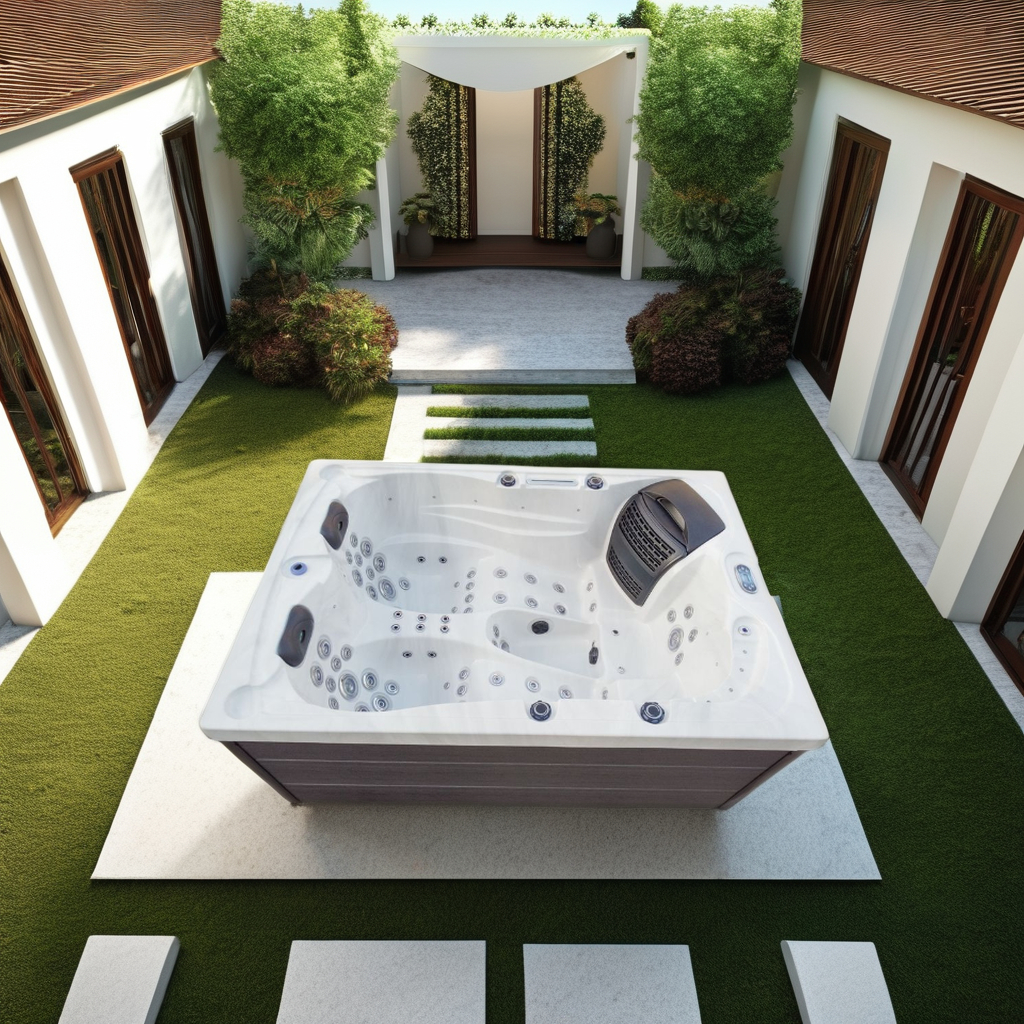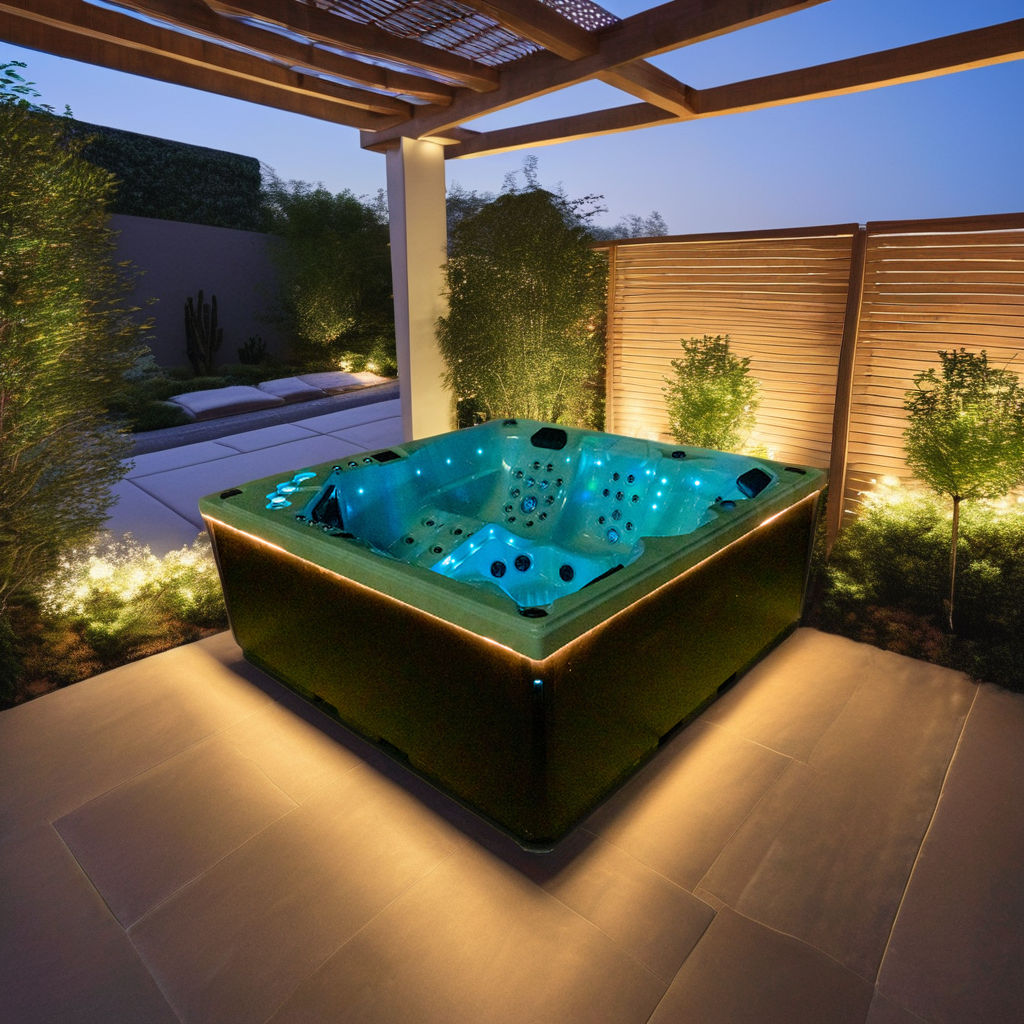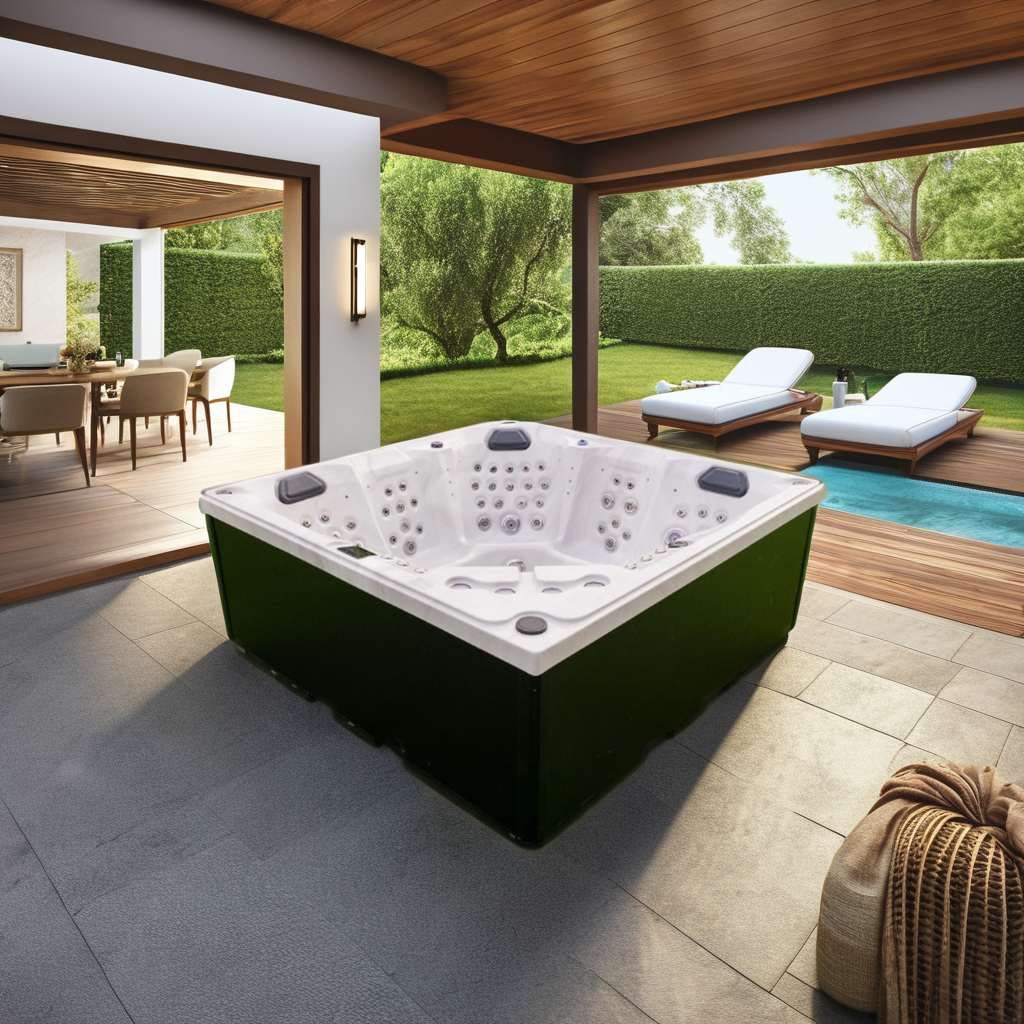
Does the energy-saving mode of an outdoor spa hot tub save electricity?
2025-08-15 15:30The high energy consumption of outdoor spa hot tubs has always been a concern for consumers, especially when running for extended periods or during winter, which can significantly increase electricity bills. To address this, many manufacturers have introduced energy-saving or eco-mode options, claiming to effectively reduce energy consumption.
However, do these energy-saving modes really help users save on electricity? How do they work? Does using energy-saving mode affect water temperature and user experience?
This article will delve into these questions, analyzing in detail whether energy-saving mode in outdoor spa hot tubs actually saves electricity and helping users use this feature more effectively.

What is energy-saving mode in an outdoor spa hot tub?
Energy-saving mode in an outdoor spa hot tub typically refers to an optimized energy management strategy during the heating, circulation, and filtration processes to reduce power consumption while maintaining a comfortable water temperature. The specific implementation of energy-saving mode may vary between brands and models of outdoor spa hot tubs, but it primarily involves the following:
1. Reducing Heating Power
In energy-saving mode, an outdoor spa hot tub typically limits the power of the heater to reduce instantaneous energy consumption. For example, standard mode might use full power (e.g., 3000W) to heat the water, while energy-saving mode might limit the power to 1500W or less to reduce electricity consumption.
2. Adjusting the Temperature Control Strategy
In normal mode, an outdoor spa hot tub typically maintains a constant water temperature, such as a set temperature of 38°C. Energy-saving mode might allow the water temperature to fluctuate within a certain range (e.g., 37°C to 39°C), reducing heating frequency and power consumption, thereby reducing energy consumption.
3. Optimizing Water Circulation and Filtration Time
The water pump is a crucial component of an outdoor spa hot tub. In energy-saving mode, the pump's operating time and speed are typically optimized. For example, standard mode might cycle once an hour, while energy-saving mode might adjust the cycle to every two hours, reducing motor runtime and energy consumption.
4. Nighttime Low Power Mode
Some high-end outdoor spa hot tubs automatically enter nighttime low power mode when in energy-saving mode. This means that heating and circulation functions are activated during off-peak hours (such as late at night) to avoid high daytime electricity prices and reduce unnecessary nighttime energy consumption.

Does energy-saving mode on outdoor spa hot tubs save electricity?
To answer this question, we need to analyze several key aspects: heating energy consumption, the impact of the circulation system, water temperature maintenance, and the impact of user habits on electricity bills.
1. Changes in Heating Energy Consumption
The heating system of an outdoor spa hot tub consumes the most electricity. Generally, the heater consumes between 1500W and 6000W. When an outdoor spa hot tub is in standard mode, the system strives to maintain the set water temperature, which means the heater will activate frequently to compensate for heat loss. Energy-saving mode, however, does reduce electricity consumption by reducing the heater's operating time or power consumption.
However, whether this energy-saving mode actually saves electricity bills depends on the following factors:
· If the ambient temperature is low, the water temperature will drop rapidly in energy-saving mode, and the system will still need to be heated frequently, potentially limiting the energy savings.
· If the outdoor spa hot tub is well insulated, such as with a high-efficiency cover and thicker insulation, energy-saving mode can effectively reduce heating requirements, thereby saving electricity.
2. Energy Consumption of the Filtration and Circulation System
In addition to the heating system, the water circulation and filtration systems of an outdoor spa hot tub are also significant energy consumers. In standard mode, the filtration system typically runs regularly to maintain water quality, while energy-saving mode may reduce the running time of the water pump, reducing power consumption.
However, reducing water circulation may lead to the following problems:
· Reduced water quality: If the water circulation time is too short, water quality may deteriorate, leading to the accumulation of bacteria and impurities, requiring additional chemical treatment or more frequent water changes, indirectly increasing maintenance costs.
· Reduced pump efficiency: Some high-efficiency pumps are more energy-efficient when running for long periods of time rather than short, frequent starts. Therefore, reducing the running time may not necessarily significantly reduce overall energy consumption.
3. The Impact of Ambient Temperature on Energy-Saving Mode
The energy-saving effect of an outdoor spa hot tub is closely related to the ambient temperature. In winter, when the outside temperature is lower, the water temperature drops more rapidly even in energy-saving mode, requiring the heater to operate more frequently. Therefore, in cold weather, energy-saving mode may not save as much energy as expected.
On the other hand, in summer or in warm regions, the water temperature in an outdoor spa hot tub drops more slowly, and energy-saving mode can effectively reduce heating requirements, thereby achieving true energy savings. Therefore, whether energy-saving mode saves energy is closely related to the usage environment.
4. User Usage Habits
The energy-saving effect of energy-saving mode also depends on user usage habits. For example:
· If the user uses the spa hot tub frequently every day, the system needs to continuously heat the water, and energy-saving mode may not significantly reduce energy consumption.
· If the user only uses the spa hot tub once or twice a week, energy-saving mode can reduce heating requirements when the tub is not in use, thereby reducing overall energy consumption.

How can I more effectively save on my outdoor spa hot tub's electricity bill?
In addition to using energy-saving mode, users can further reduce energy consumption in their outdoor spa hot tubs by:
1. Use a high-quality insulated cover
An insulated cover significantly reduces water evaporation and heat loss, reducing the workload on the heater.
2. Clean the filter system regularly
A clogged filter increases the energy consumption of the water pump. Regularly cleaning or replacing the filter improves energy efficiency.
3. Set the water temperature appropriately
Every 1°C reduction in water temperature can reduce energy consumption by 6-10%. If it's not winter, set the water temperature to 36°C to 37°C instead of 38°C to 40°C to reduce heating demand.
4. Avoid heating during peak electricity price periods
If your area has off-peak electricity prices, it's recommended to run the heater during times when electricity prices are lower, such as at night or in the early morning.
5. Choose a highly energy-efficient model
When purchasing an outdoor spa hot tub, it's recommended to choose one with energy-saving certifications (such as ENERGY STAR certification), which typically save over 20% in energy consumption compared to standard models.

Outdoor spa hot tub: Is energy-saving mode worth using?
Overall, while energy-saving mode on outdoor spa hot tubs can indeed reduce energy consumption, the actual savings depend on several factors, including the tub's insulation performance, ambient temperature, frequency of use, and personal habits. While energy-saving mode can effectively reduce electricity bills in warm weather or with low-frequency usage, its effectiveness may be limited in cold climates or with frequent use.
